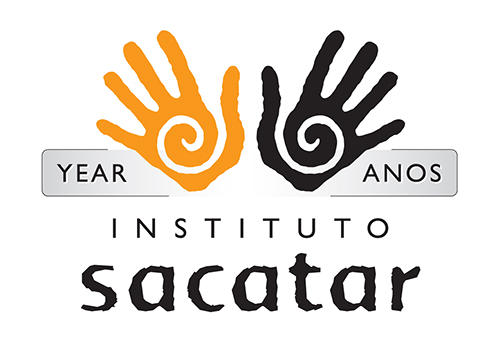
Previous Newsletters
December 2018 / Number 25
December 2017 / Number 24
September 2017 / Number 23
December 2014 / Number 22
September 2014 / Number 21
February 2014 / Number 20
August 2013 / Number 19
June 2013 / Number 18
February 2013 / Number 17
September 2012 / Number 16
June 2012 / Number 15
October 2011 / Number 14 – SPECIAL 10TH ANNIVERSARY EDITION
March 2005 / Number 01
October 2011 / Number 14 / SPECIAL 10TH ANNIVERSARY ISSUE
SACATAR CELEBRATES ITS TENTH YEAR!
This is not the history, but the story of Sacatar, told in a patchwork of memories and dreams, by me, Augusto Albuquerque and by our founders, our partners and the many artists who have come to Sacatar. This is Bahia. What I say may or may not be true, but it is the story as I tell it
The original Sacatar is a place high in the Sierra Nevadas of California, the place where Mitch Loch and Taylor Van Horne began to dream of creating a residency program for artists of all disciplines and nationalities.
First, they considered creating a residency there, at Sacatar in California…
.…but they quickly realized that there were already a hundred or so residency programs in the United States.
Taylor had a history in Brazil, dating back to when he was sixteen years old, living with a Brazilian family as an exchange student.
‘I had lived many years in the extraordinary culture of Bahia and felt that the generosity and fearlessness of the Baianos in assimilating all outside influences and making them their own was a lesson artists everywhere might learn to enrich their own cultures. The Baianos have this capacity to transform and reinvent their cultural heritage.’
Taylor Van Horne
Founding Director Instituto Sacatar
Mitch and Taylor researched and discovered that ten years ago there were no residency programs in Brazil, so they decided to create one there…and specifically, in Bahia. However, they liked the strange name of the property in California—a name that could be Sanskrit or Japanese or from almost any language on earth, a name that comes embedded with many suggestive Portuguese verbs: saca (to comprehend), cata (to search for), ata (to tie together)—and so they kept the name ‘Sacatar.’
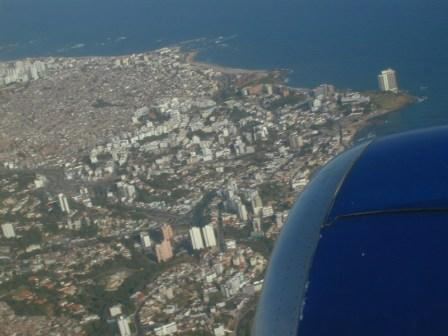
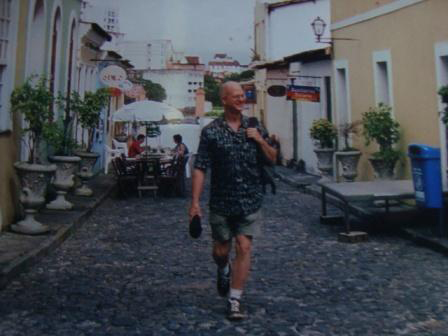
But first, they had to find an adequate place in Bahia. The Island of Itaparica was always their first choice. Itaparica is close to Salvador, the colonial capitol of Brazil, but at the same time, a million miles away (forty minutes by boat) from the urban crush of the city, which now has more than three million inhabitants.
Mitch Loch, with his broad experience with residency programs around the world and in non-profit administration, began to consider how to construct a program that could survive operating between the United States and Brazil, using two different languages, two kinds of currencies, two legal systems, two foundations, two boards and certainly two wildly different cultures. Mitch began to lose the rest of his hair, but he learned to make caipirinhas and to dance like the locals.
The challenge was to create a program that was both local…
…and yet could survive long-term through international partnerships.
Ultimately it was Mitch who found the perfect property… while far from Bahia, at a Hollywood party, drinking champagne instead of caipirinhas. ‘Thank you, Sam Fuller!’ (This part of the story could be a Hollywood screenplay, if any producers are reading it.)
It wasn’t just any property. It was the Casa de Férias Santa Therezinha, the vacation home of the Instituto Feminino, a pioneering girls’ school founded by Henriqueta Martins Catharino, a true social visionary of the early twentieth century.
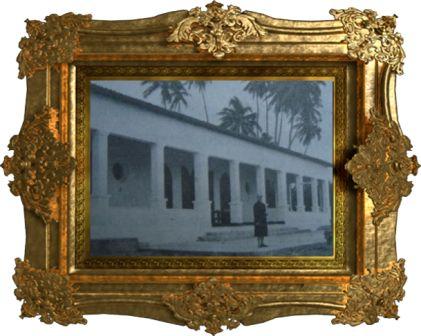
Dona Henriqueta Catharino in front of the house, 1955
They knew immediately that they had found the perfect property…
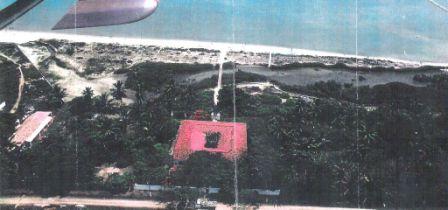
…but there was some work to do to turn it into a residency for artists.
So once the location of the Instituto Sacatar had been determined, what did they do? It’s Bahia. They offered a caruru. (A caruru is sort of like the American Thanksgiving…)
What better way to please São Cosme, São Damião and all the saints of Bahia de Todos os Santos, but by bringing friends, neighbors, some unknown characters and also some future employees to celebrate together around the fascinating cuisine of Bahia? Food for the body and spirit!
In September 2001, the first artists/Fellows came. The Sacatar staff entered into the spirit of things. An artistic ‘despacho’ was made (an offering) and the muses and gods of the arts definitively joined the pantheon of the gods and orixás of Bahia.
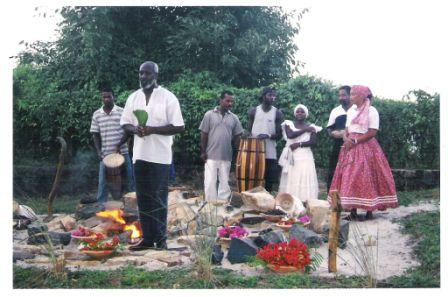
PATRICIA CHAO (USA, NOVEMBER 2001) I was in one of the original groups of Sacatar Fellows in the fall and winter of 2001, arriving a month after 9-11. To travel from a city saturated with the smoke of Ground Zero to a sunny beach lined with flowers and monkeys chattering in the trees was a surreal experience and a blessing…The novel I am working on currently is set half in Brazil. I pay homage to the magic I was privy to that season—the extreme beauty of the landscape, the joyous music, rituals of candomblé, all the darkness and light.
JANE COFFEY (USA, NOVEMBER 2001 / JUNE 2004 / JULY 2010) It was October 2001 when I left New York City for a residency at Sacatar. I was in a state of creative limbo. It was the people around me who helped restore my faith in the value of art. That time at Sacatar changed my life, my work and without a doubt, my heart.
JANE INGRAM ALLEN (USA, JANUARY 2002) The opportunities to work with local people and collaborate with other artists from different disciplines made my experience at the Sacatar Foundation extremely rewarding and also led to future projects in other countries expanding my career and intensifying my focus on community involvement and collaboration.
SIGITAS STANIUNAS (LITHUANIA, SEPTEMBER 2002) The possibility I was granted to work and create in Itaparica made a huge impact on my artistic development. Till today I can remember, feel, smell and visualize the colors, sounds, nature, landscapes, which I experienced while being in Itaparica.
And then to work! In 2002 we built what we still call the Casa Nova, which included a proper laundry and staff support facilities.
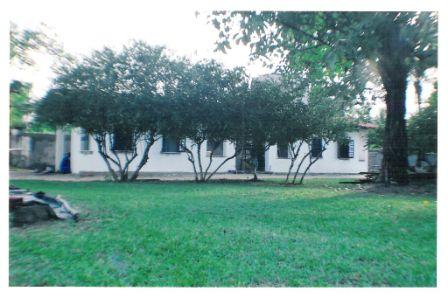
With nine thousand square meters of seaside property, we began to dream and plan a series of studios to be built across the site.
The artists kept coming and learning that, in order to thrive in Bahia, you must enter the ‘clima’ and find your rhythm. And as they caught the beat, extraordinary things began to happen:
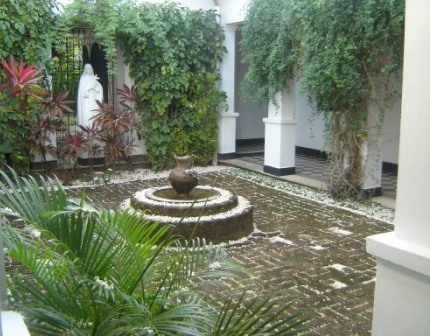
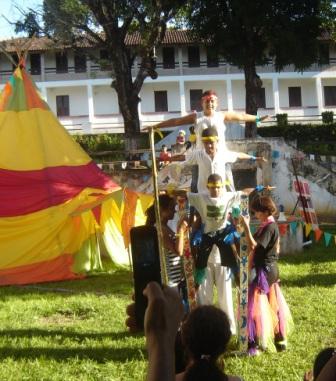
It ‘snowed’ in Bahia, ‘miracles’ occurred, the circus arrived and archeological ‘treasures’ were unearthed.
JACQUELINE BOUCHARD (CANADA, AUGUST 2007) I was really fascinated by the rituals of Candomblé in Itaparica. I created an installation with pipoca (popcorn). Pipoca in Brazil has a spiritual meaning. In Candomblé, they use it as a means of purification. Merci et meilleurs souvenirs à toute la famille de SACATAR!
INÊS RAPHAELIAN (BRAZIL, JANUARY 2003) First of all… UNFORGETTABLE! This experience influenced my work and I can see the results of it until now. My work took a new direction. A vast number of possibilities emerged from what happened during the residency at various levels – personal and professional.
In Itaparica, Inês initiated a fictitious archaeological dig, unearthing the remains of extinct computer languages, much to the consternation of the Itaparica City Hall, which continues to receive international queries regarding these excavations. Inês has made additional discoveries elsewhere around the world since her pioneering work done in Itaparica in 2003.
PAT OLESZKO (USA, JUNE 2008) I was possessed, POSSESSED by the camaraderie of my inspiring fellow artists, the multiple muses of the sea, sand, island and evanescent weather, the compelling effervescence of the Bahians with their astounding celebrations, music, dance and love of life…We all wept when we left.
BE WARD (AUSTRALIA, JUNE 2008) I believe it is experiences like my residency at Sacatar which give creative people such as myself the inspiration, connections and confidence to go further and deeper in our quest to share our work with the wider world in the most potent and effective way we can.
After their residencies together, Pat Oleszko created and brought to life a giant puppet that officiated at Be Ward’s wedding in Argentina.
DAVID POZNANTER (USA, JUNE 2008) At Itaparica I learned to breathe, and to infuse my work with life and color. I played Capoeira on the beach every day with the local teenagers, made video art with them, taught them to juggle (and) collaborated on a circus project with a local grade school… From Itaparica, I moved to the Dominican Republic to run a circus company for a year, where I was eventually able to fly out two Itaparican acrobats to work with our company, and we integrated Capoeira and Brazilian percussion into our show there.
David left the Dominican Republic and the two young men from Itaparica continued to run the program that he had established there.
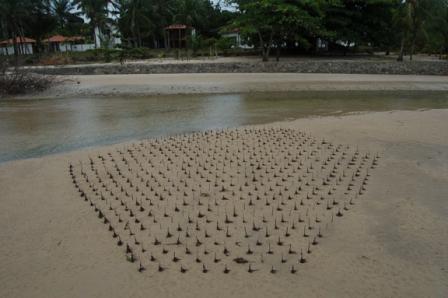
The beach at Sacatar became the gallery, the runway, the stage and the site where the most diverse artistic manifestations took place.
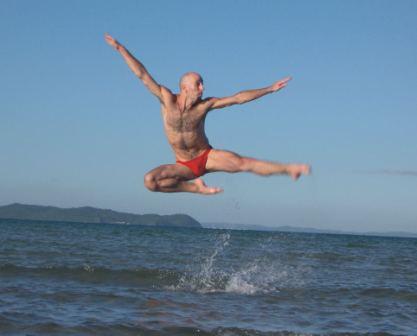
DANIEL GWIRTZMAN (USA, NOVEMBER 2003) Everything about the residency at Sacatar was harmonious: the intimacy shared with the other Fellows; the generosity of the Sacatar staff; the exchanges with residents in Itaparica and Salvador; and the magnificence of Bahia. Having the freedom to explore nature for an uninterrupted period was an unprecedented gift. The spirit of Sacatar is a force as gripping as the tides of the Bay.
MELANIE BAKER (USA, NOVEMBER 2003) Itaparica has my heart, and I love to conjure up the pier, the peacocks, Xid as a puppy, birds in the kitchen, crabs walking sideways across the sand, but most of all, the generosity and warmth of the people who made it all possible.
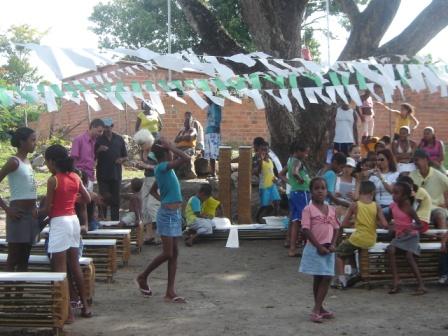
Actions overflowed into the community.
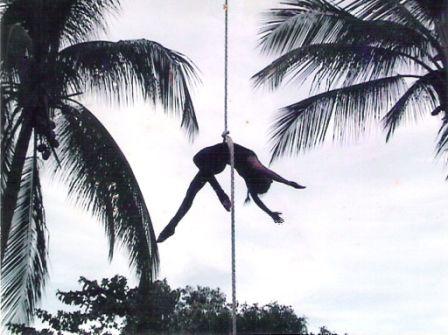
SOLANGE LIMA (BRAZIL, DECEMBER 2005) www.festivalilhadeitaparica.com Touched by the socio-economic poverty and at the same time the cultural richness of the island of Itaparica, I had the idea for a cultural street festival. The first edition of the Festival da Ilha de Itaparica (FESTIT) happened on December 10 and 11, 2010, with the support of many people and also the Instituto Sacatar.
Solange has bought a house on the island of Itaparica. She comes every year during the winter months in France, where she lives the rest of the time. In February 2012, she will realize the second edition of FESTIT.
‘For the children and youngsters of the Oficina de Artes, the cultural activities in partnership with Sacatar are very valuable. They transport those people to a world of knowledge, beauty, arts, music, attitude, creativity, participation and above all the exchange of cultural information. A case in point was Renascimento, choreographed by Daniel Gwirtzman and involving many of the people in the community, both young and old.’
Some of our staff found themselves immortalized by the artists:
VICKY SHUKUROGLOU (AUSTRALIA, DECEMBER 2005) Taylor and Mitch were pleased to inform us that we were the first group with an artist from each continent, and we sometimes wondered how this influenced our dynamic and passionate discussions around the table, on our walks, with the broader community or ‘out at sea…’ The complexity and depth of the imprints left by my time at Sacatar remain; their color and shape has not diminished or become stagnant. These memories of sharing, exchange and abundance in the most vital – often intangible – ways continue to feed my current work and the workshops I conduct. Exhibitions, residencies and other projects I have been involved with since, have been strengthened by my experience at Sacatar.
LUCIO GREGORETTI (ITALY, DECEMBER 2005) My way to look at my work slightly changed, and definitely improved, thanks to the magical atmosphere of the place and the people on the island too. To date, there is no grand piano in the composer’s studio, but there is an incredibly magical world all around which widely compensates.
ERMAN GONZALEZ (CUBA, AUGUST 2006) My experience at Sacatar marked a turning point in my life, one I had been seeking. Sacatar afforded me introspection, peace and selfish time outside of the real hustle and bustle and 5 years later I am still gifted.
In 2005 we built an administration building upon the foundations of the doorless staff bathroom from the first year. We also built a writer’s studio, poised over a wellhead that had been an ugly presence in the midst of the coconut grove. We built a woodshop for maintenance and more chaotic artist projects. We also built two open air visual arts studios, the ones that the artists share with birds and turtles. At last we had separate studios for each artist in residence. The photos tell the story:
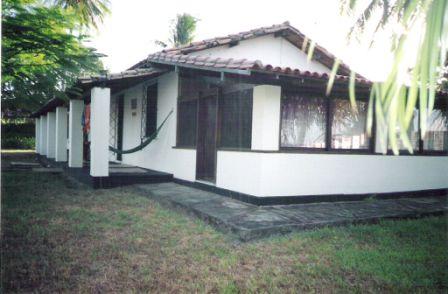
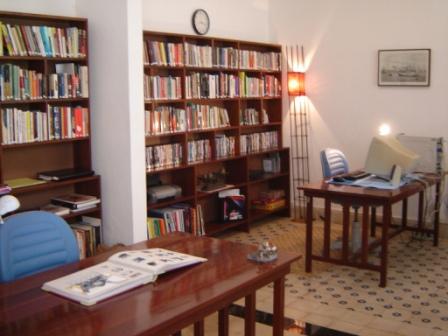
ERSI SOTIROPOLOUS (GREECE, AUGUST 2006) Sacatar is the best residency I have ever had: a Paradise for artists and writers in a magnificent landscape conducive to both concentration and interaction. The place is still alive inside me: the changing colors, the early mornings in my studio, the beauty of the people of Bahia.
BERND LICHTENBERG (GERMANY, OCTOBER 2006) For me Itaparica is a magical island and Sacatar a magical place, especially because of the neighborliness of the people. Sacatar is a place that got me reconnected with my serenity. Thanks a lot for that!
MICHAEL LOWENTHAL (USA, FEBRUARY 2008) I have never been more inspired to write, and to write well, than when I was at Sacatar, because the place and its people were so beautiful that I felt filled constantly with the desire to create something that might honor that beauty.
YUMI KORI (JAPAN, FEBRUARY 2008) It was the most productive two months I have ever had.
SCOTT “XICOTE” BARTON (USA, AUGUST 2008) Sacatar changed the trajectory of my life. Following my residency I have matriculated in a doctoral program to continue the project I began there on sacred and secular food as a cultural marker of identity in Northeastern Brazil.
HANNAH MORRIS (USA / SOUTH AFRICA, AUGUST 2008) From working in my studio beneath swaying of palm trees hearing the tinny blare of political slogans shouted through bullhorns, to gathering collage materials at second hand bookstores in Salvador (nearly fainting at the gorgeously preserved Brazilian magazines from the 1950s) to sitting in the living rooms of 90-year-olds in Itaparica with Rogério Andrade de Barbosa capturing local stories, to flying kites with children at an arts center for at-risk youth in Salvador, to exploring Chapada Diamantina with a new Salvadorian friend – these are the big memories that leap out. Then there are about 5,000 other little memories that round out an experience that changed my life. I started a new direction in my career (collage work as well as stop-frame animation), produced a picture book for Brazilian children and adults (and made inroads into the Brazilian publishing world) and developed connections (friendship, romantic and artistic – all of whom are very much a part of my life now.) It’s incredible to me that all of this happened in two months. That is the nature of Brazil, I dare say, and Sacatar was my conduit.
DANY LERICHE & JEAN MICHEL FICKINGER (FRANCE, AUGUST 2009) We remember men carrying birds in cages, the little houses with different colors, Exus in the market of São Joaquim, the night with the Eguns, our meeting with candomblé—all of which have us on the road to Benin, Togo, Haiti, Cuba…to many unknown worlds…
In 2010 we built two additional studios: an all important dance studio (because everyone in Bahia dances) and a composer’s studio. Now we had seven studios and five bedroom apartments, providing us great flexibility in assigning spaces.
‘The Alliance of Artists Communities is thrilled to recognize Sacatar’s 10th anniversary. Sacatar has emerged in that time as a leader in the field for its commitment to providing artists with an inspiring and nurturing environment and for challenging the field to examine the need for meaningful, culturally-informed engagement between artists and communities. The Alliance looks forward to Sacatar’s continued evolution and leadership in the decades to come.’
Caitlin Strokosch Executive Director Alliance of Artists Communities www.artistcommunities.org
‘Warmheartedly I would like to congratulate you both with the 10th anniversary of Sacatar! How quickly times goes, I do remember our first talks about the wonderful idea to start a residency in Brazil. I was moved by both your personal involvement and strong motivation to start a residency in Brazil, for Brazilian artists (and other international artists) and run by Brazilians… I felt so fortunate that I could visit Sacatar and to finally see Sacatar with my own eyes, felt touched the commitment of both of you but also by everyone who works at Sacatar. Not only is it situated on a stunning spot, overlooking the water, but all the facilities and the beautiful studios designed by Taylor are amazing! The artists feel at home, well taken care off and fortunate because everything is there in the best possible way, beautiful workspaces, lovely apartments, good library, delicious cooking. A very committed staff supports them, connects them to local artists, the community or any other contact they might need. And above all they are meeting with other artists and with you, the visionaries who created and realized their dream to share it with others. What better inspiration could an artist need! A big hug to you both and let’s hope for many more years for Sacatar!’
Maria Tuerlings Founder Transartists www.transartists.nl
REVITAL FALKE (ISRAEL, OCTOBER 2010) Staying at that amazing property next to the beach for two magical months, I was the first Israeli ever hosted there. I became best friends with a guy from Iran, who I could never meet otherwise. (It’s forbidden for Israelis to travel to any Arab countries, and vice versa.) I am thankful for that experience and won’t forget it.
ANA TEIXEIRA (BRAZIL, JANUARY 2011) Now, back to Sao Paulo, five months after of the end of residency, I still find myself immersed in ideas that emerged in Sacatar and these ideas are taking shape gradually, the results of the extended time I lived in Itaparica.
FELIPE LARA (BRAZIL, JUNE 2011) Itaparica’s cultural heritage, its characters and stories are an inspiration not only for projects conducted at the residence, but for life.
Many friends contributed their happiness, beauty and warmth. Some have come and gone…
Santa Tereza remains, as she has since the beginning, overlooking the activities from the central courtyard of the Casa Grande, except that now she is joined by Cosme and Damião.
Today, after ten years of continuous activity, after hosting over two hundred artists from forty-three countries, we have good reason to celebrate. Thanks to all who have shared the adventure with us.
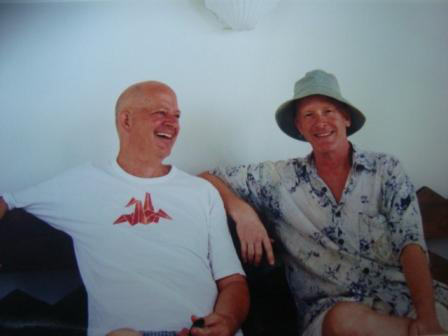
Taylor Van Horne and Mitch Loch on the verandah of the Casa Grande at Sacatar
We wish to thank all of the Sacatar Fellows who submitted statements and photos for this Special Edition of the Jornal Sacatar, celebrating our tenth anniversary: Ana Teixeira, Ariel de Bigault, Be Ward, Bernd Lichtenberg, Dagmar Binder, Daniel Gwirtzman, Dany Leriche, Erik Goengrich, Erman, Ersi Sotiropoulos, Etienne Yver, Felipe Barros, Felipe Lara, Giovana Dantas, Hannah Morris, Inês Raphaelian, Jacki McInnes, Jacqueline Bouchard, Jane Coffey, Jane Ingram Allen, LaShawnda Crowe-Storm, Lucimar Bello, Lucio Gregoretti, Maggie Smith, Marcio Harum, Mari Ogihara, Maureen Fleming, Melanie Baker, Michael Lowenthal, Muthukrishnan Ramalingam, Pat Oleszko, Patricia Chao, Raminta Serksnyte, Rasoul Abbasi, Revital Falke, Roy Staab, Sandro Pimentel, Scott Barton, Sicelo Zibuqu, Sigitas Staniunas, Solange Lima, Sophie Preyveraud, Vicki Shukuroglou, Yoko Inoue, Yumi Kori and Zahra Beigi.
The aerial images of Sacatar, California, are by Google Earth. We thank Ana Angélica Alves for the photos of the young Taylor Van Horne.
We also wish to thank current and former board members on both sides of the equator: Cícero Antônio, Dilson Medlij, Eneida Sanches, Felicia Filer, Gila Kessin, Helen Miller, Justino Marinho, Marcelo Thomaz, Sabrina Gledhill, Sergio Guedes and Viga Gordilho.
Also our thanks to the extraordinary staff of Sacatar: Alex Esquivel, Anderson, Antonio, Dete, Edson, Márcia, Patrício, Raimundo, Reginaldo, seu José and all the former staff members.
Mitch and Taylor extend a special thanks and a big hug to Augusto Albuquerque, whose warmth and compassion infuse everything we do!






